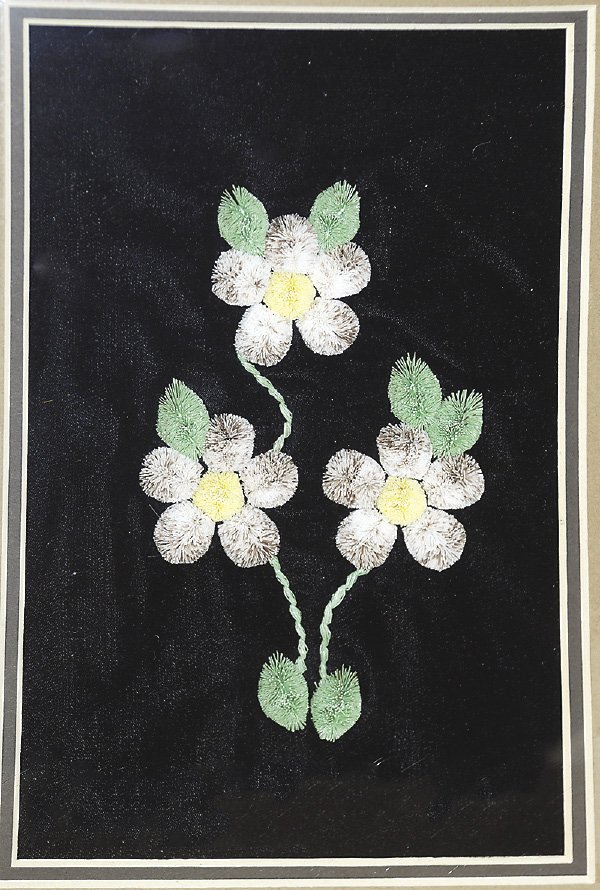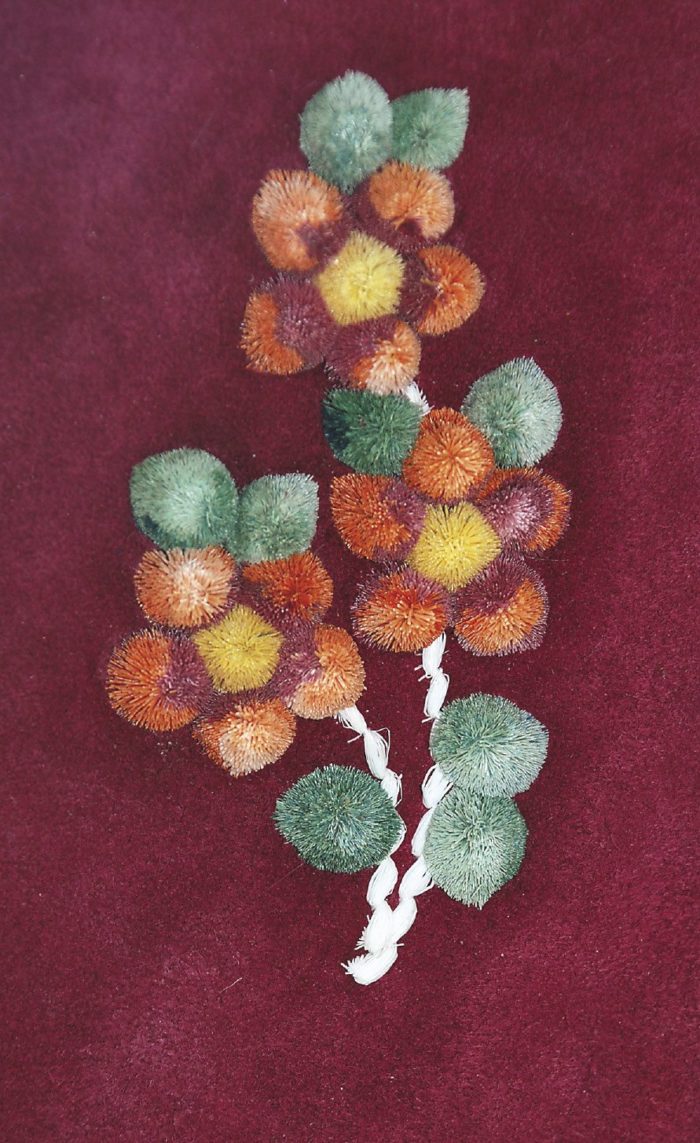It was in Fort Providence, Northwest Territories (NWT) when I first learned about moose hair tufting. We had stopped there for lunch at the Snowshoe Inn Restaurant and later went for a quick look at their adjoining arts and crafts store. Well, we came out with an armful of framed and loose moose hair art.
Fort Providence—called “Zhahti Kue” in Dene language, which means “Mission House”—is a Dene and Metis community (population 625 in 2016) on the northeast bank of the Mackenzie River. The settlement has been there for almost 160 years and in 1868, was renamed “Fort Providence” by the Hudson’s Bay Company.
Historically, twisting moose and caribou hair to decorate items is an old Athapaskan art predating European contact, however, according to NWT records “the craft of tufting did not come into existence until shortly after World War I.”
And it was in Fort Providence area where the story of moose tufting began. A Metis artist from the area, Boniface Lafferty, is credited with developing moose hair tufting over a hundred years ago. She had observed, and was inspired by, a resident nun using wool in art work punched into material (“punch work”). Boniface substituted moose hair for the wool and created a new decorative art form that became known as moose hair tufting. She taught the technique to her daughter-in-law who in turn taught it to Sister Beatrice Leduc, a Grey Nun at the Fort Providence Mission School and through Sister Leduc’s teaching the craft to her students, moose hair tufting spread to other communities and regions.

So, what is moose hair tufting? Tufting uses moose hair (sometimes caribou) to produce three-dimensional images—like flowers, leaves and birds—by stitching and trimming bundles of selected moose hair onto tanned hides or velvet reinforced by canvas. The artist requires precision, skill, a steady hand and patience; for example, each flower takes six to eight hours to create. The best moose hair for tufting comes from the shoulders and rump area, and is hand-picked from the moose hide (caribou hair is plucked from the beard), with only the white hair used.
Hairs are sorted according to size, length and colour, cleaned, and gathered into small bundles of 15-20 hairs which can be dyed or left natural. Traditional dyes were roots, lichen, flowers, bark and wild berries. However, today commercial powdered dyes and crepe paper are generally used to produce vibrantly-coloured hairs.
The artist places the tuft bundle on the design that has been drawn freehand on the backing material. Thread is drawn through the hide around the bundle about l/4-inch from the end, pulled tightly back through the hide which makes the bundle stand straight up, and then knotted. The tuft bundles are placed close together with no space in between and once the design is filled, the tuft ends are scissor-trimmed to create a smooth, rounded effect.
In addition to beautiful framed works of art, moose hair tufting is used on Indigenous clothing to decorate mittens, gloves and footwear. In recent years, the century-old art form first started in Canada’s north and almost disappearing, is making a comeback and being crafted again by Indigenous artists.





